by Ray Bodrey | Aug 10, 2020
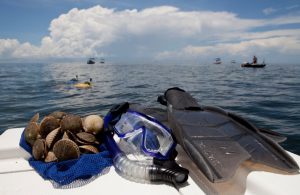
Tuesday, August 11th from 6-7 PM ET
Join us to learn more about recreational scalloping!
Hear from UF/IFAS, Florida Sea Grant, FWC, and FWRI presenters and stay for Q&A.
The pandemic has been challenging, to say the least. We must all must be contentious to all residents and visitors looking forward to spending some good quality time on the bay. The 2020 recreational scalloping season is set to take place August 16th – Sept. 24th for St. Joseph Bay and Gulf County. This region includes all state waters from the Mexico Beach Canal in Bay County to the westernmost point of St. Vincent Island in Franklin County.
During this event, UF/IFAS Extension & Florida Sea Grant Agents, along with Florida Fish and Wildlife Conservation Commission will give updates and hold Q & A about the status of scallop populations in the area and the ongoing monitoring projects. There will also be information presented regarding regulations, as well as boat safety reminders so that everyone will have a safe trip out of the water this season!
Join us to learn more about recreational scalloping! Don’t miss out!
This event is free, but you must register here: https://www.facebook.com/events/329876454812541/
For more information, contact Gulf County Extension at 639-3200 or email at rbodrey@ufl.edu. *Due to COVID-19, our physical office location is closed to public traffic at this time. However, please call or email us for assistance with extension related needs. Sorry for the inconvenience.
UF/IFAS Extension is an Equal Opportunity Institution.
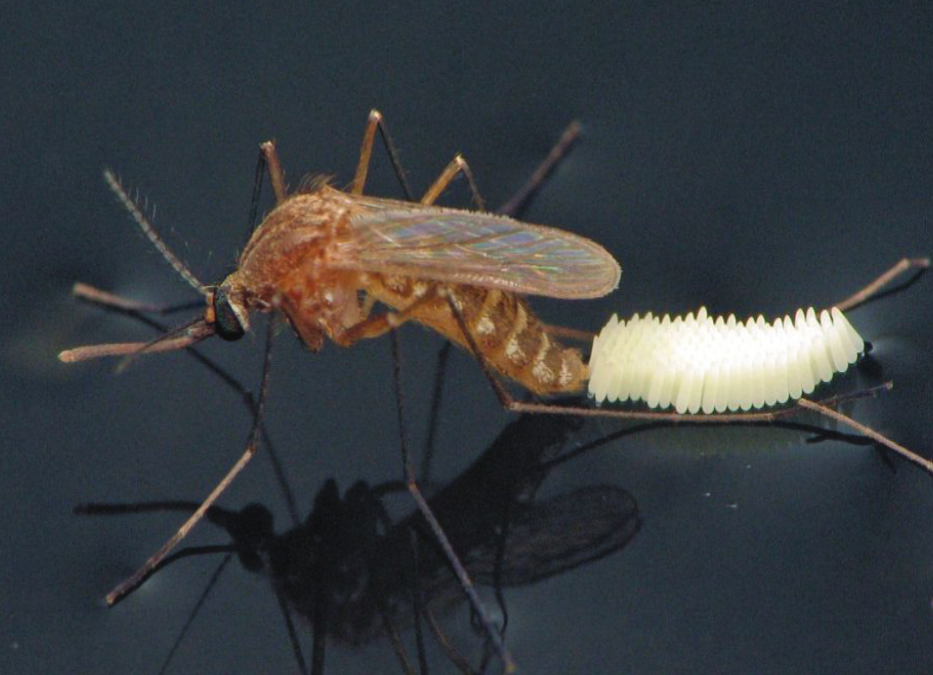
by Ray Bodrey | Jul 15, 2020
Attacking mosquitos are spoilers for our outdoor activity interests this time of year. Hurricanes and other storm events tend to be a catalyst that increases these populations. Not only are mosquitos a nuisance, but they are carriers of several diseases. But, there are ways to control these annoying pests and get some relief.
Mosquito populations can be divided into two categories: floodwater mosquitoes and standing water mosquitoes.
Floodwater mosquitoes need water to lay their eggs, and the eggs also need to dry out before hatching during a storm event. Moist areas like pastures, planting furrows, salt marshes and swales are prime habitat. If you look close, the eggs can be found in cracks in the soil. Again, stormy rains and surge act as a catalyst for these eggs to hatch. So, what is the approximate estimate of mosquito eggs per acre in floodwater habitat in Florida? Scientist estimate 700,000 to 1.3 million eggs per acre. And yes, that’s per acre. Unfortunately, small scale efforts to reduce standing water around properties have little effect on control.
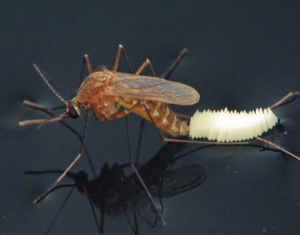
Figure 1. Standing water mosquito and eggs (Culex quinquefasciatus).
Credit: S. McCann, UF/IFAS/FMEL.
On the other side of the coin, standing water mosquitos need,…you guessed it, standing water to lay their eggs. These mosquito eggs cannot withstand drying out, therefore cannot hatch into larva. Females lay eggs on the surface of water with a hatching time of around 24 hours. The larva to pupae to adult stage happens quickly in mosquitoes, and the thirst for blood is not far behind. After a female finds a blood source, the cycle starts all over again. Only the females have biting mouth parts. Both male and female mosquitoes feed on the nectar of flowers. It’s the female mosquitoes that usually need a blood meal to insure mature eggs.The combination of the two groups of mosquitoes provide for a double whammy put in place by a storm. When dry areas flood, floodwater mosquito eggs hatch. When floodwater has nowhere to go, standing water mosquitoes have an abundance of places to lay eggs.
Unfortunately, some diseases can be transmitted by mosquitoes, such as west nile virus, eastern equine encephalitis and even heart worms in dogs. So, what can be done to combat these pests around your property? Reducing the amount of standing water helps dramatically, especially, dumping water holding containers. Cleaning debris from rain gutters too, can help as water can collect in blocked gutters. Mineral or cooking oil can be added to standing water and rain collection devices, as the oil forms a thin film on the surface of the water which causes larvae and pupae to drown. This is also a good control method with plant containers that collect water. Mosquito biological controls, like Bt (Bacillus thuringiensis) are helpful and will not harm pets or livestock. These products can be used in fish habitats, animal water troughs, bird baths, rain barrels, roof gutters and tree holes, just to name some. Please read precautionary statements and manufacturer application directions before use. Rain gardens are also very beneficial in suppressing standing water. If you have an area of your property that is known for water holding capacity, be sure to plant water loving plants in that area.
For more information please contact your local county extension office.
Supporting information for this article can be found in the UF/IFAS EDIS publication: “Hurricanes and Mosquitos” by C. Roxanne Connelly: https://edis.ifas.ufl.edu/pdffiles/IN/IN53500.pdf
UF/IFAS Extension is an Equal Opportunity Institution.
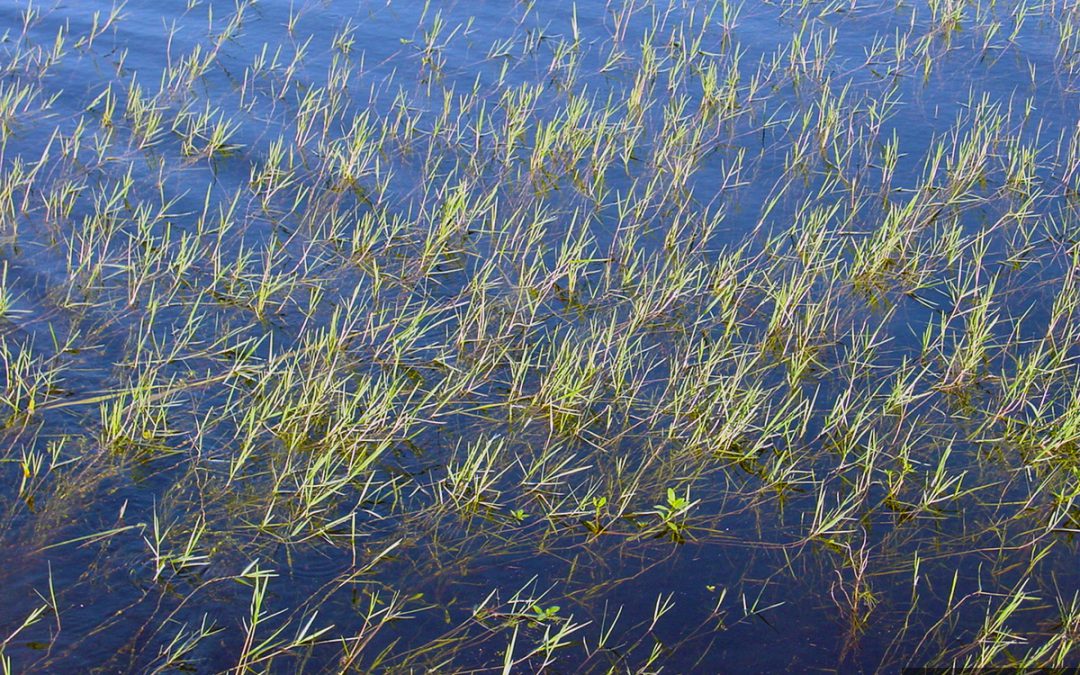
by Ray Bodrey | Oct 24, 2019
Tordpedograss (Panicum reopens) is one of the most concerning weeds in Florida and now easily found in the Panhandle. This weed’s favorite habitat is in or near ponds and ditches, but will spread across lawns and pastures.
A native grass of both Africa and Asia, torpedograss was introduced through seed in the U.S in the late 1800’s as a forage crop for livestock. Torpedograss is in the family Poaceae, along with other grasses such as the persistent invasive threat, cogongrass, as well as common bermudagrass. It gets its name from the sharply pointed tip and not only is it exceptionally fast spreading, it can grow as tall as 3 feet. Torpedograss is a poor seed germinating species in our climate and primarily relies on rhizome expansion.
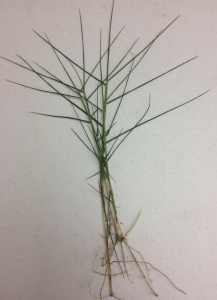
Photo: Tordpedograss (Panicum reopens).
Credit: Ray Bodrey, UF/IFAS Extension Gulf County.
This plant has a tendency to choke out and completely take over native vegetation. Agronomist in south Florida have been concerned about it for years. In 1950, the University of Florida agricultural experimental station warned: “Torpedograss is a serious weed when established in farm or grove land and indiscriminate planting without the regard to future crops or adjoining land is dangerous.” (Hodges and Jones).
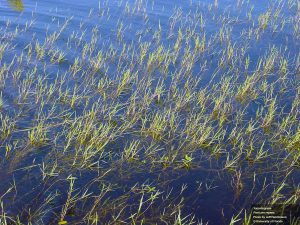
Photo: Tordpedograss pond infestation.
Credit: Jeff Hutchinson, UF.
So, what is the impact of torpedograss on Florida?
Since 1992, torpedograss has taken over 70% of Florida’s public waterways. Lake Okeechobee is considered ground zero with approximately 7,000 acres of native marsh now displaced. These dense mats of grass can impede water flow in stormwater applications, and restrict usage of irrigation holding ponds and fish ponds.
How does one manage this invasive grass?
Infestation prevention can be accomplished by controlling the rhizome expansion. This is easier said than done, as a small rhizome fragment left behind will no doubt cause re-establishment. Keeping the infestation at bay, by controlling the spread at waterways is key.
For IPM (integrated pest management) solutions follow these steps:
For cultural management, invasive plants tend to quickly establish in open or recently tilled areas. So, prescribed burn and clearing by mowing are methods that tend to promote infestations. A healthy, diverse landscape with native plants, or species with non-invasive tendencies will provide a level of defense.
Mechanical control is not very effective. Tilling the land only spreads the rhizomes through fragmentation.
There are few biological controls, although cattle and goats will graze and they may continue to spread the grass.
Chemical control using Glyphosate (Roundup, etc.) at a 2-3% solution and imazapyr (Arsenal, Chopper or Habitat) at 0.5 to 1 % solution has been effective for on land use. Aquatic herbicides with glyphosate (Rodeo, etc.) are effective for ponds. This can be applied in a liquid or granular form. A non-ionic surfactant will be needed to adhere the liquid chemical with success. Keep in mind, these herbicides are systemic, meaning they are absorbed and move through out the plant tissue. Be sure to minimize over spray damage of desirable plants, especially related to drift. Imazapyr also has longer soil activity and could impact sensitive oaks. Torpedograss is much more difficult to treat in water and will require multiple applications to completely control whether in water or on land.
For more information on torpedograss, contact your local county extension office.
Information for this article provided by the UF/IFAS Center for Aquatic and Invasive Plants: https://plants.ifas.ufl.edu/plant-directory/panicum-repens/ and the Wetlands Weeds Journal article “Torpedograss – Forage Gone Wild” by Ken Langeland & Brian Smith of UF/IFAS and Charles Hanlon of the South Florida Water Management District: https://www.se-eppc.org/wildlandweeds/pdf/su98-langeland-p4-6.pdf
UF/IFAS Extension is an Equal Opportunity Institution.
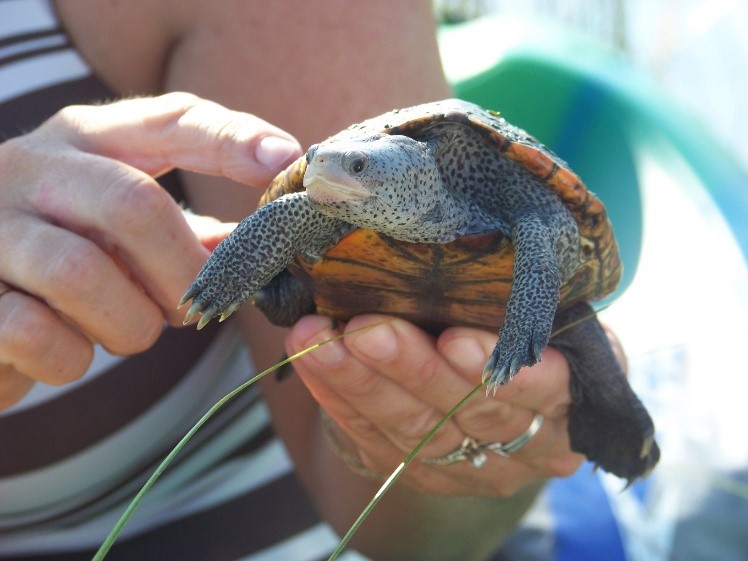
by Ray Bodrey | Apr 17, 2019
Soon, two important ecological surveys will begin in Gulf County, concerning both diamondback terrapins and mangroves.
Florida is home to five subspecies of diamondback terrapin, three of which occur exclusively in Florida. Diamondback terrapins live in coastal marshes, tidal creeks, mangroves, and other brackish or estuarine habitats. However, the diamondback terrapin is currently listed as a Species of Greatest Conservation Need (SGCN).
Diamondback terrapin populations, unfortunately, are nationally in decline. Human activities, such as pollution, land development and crabbing without by-catch reduction devices are often reasons for the decline, but decades ago they were almost hunted to extinction for their tasty meat. The recent decline has raised concern of not only federal agencies, but also organizations and community groups on the state and local levels. Diamondback Terrapin range is thought to have once been all of coastal Florida, including the Keys.
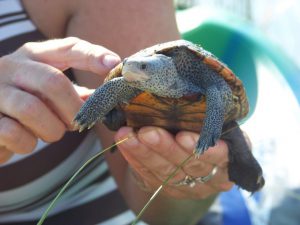
Figure 1: Diamondback Terrapin.
Credit: Rick O’Connor, UF/IFAS Extension & Florida Sea Grant, Escambia County.
Mangroves, a shoreline plant species of south Florida, are migrating north and are now being found in the Panhandle. Both red and black mangroves have been found in St. Joseph Bay. Mangroves establishment could be an important key to a healthy bay ecosystem, as a factor in shoreline restoration and critical aquatic life habitat.
Currently there is a significant data gap for both diamondback terrapin and mangrove populations. Therefore, there is a great need to conduct assessments to learn more about their geographic distribution.
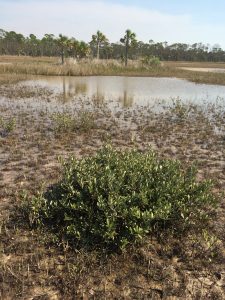
Figure 2. Black Mangrove in St. Joseph Bay.
Credit: Ray Bodrey, UF/IFAS Extension & Florida Sea Grant, Gulf County.
The Forgotten Coast Sea Turtle Center is partnering with UF/IFAS Extension & Florida Sea Grant to assist in surveying and monitoring diamondback terrapins and mangroves in St. Joseph Bay, and we need your help! UF/IFAS Extension & Florida Sea Grant Agent’s Rick O’Connor and Ray Bodrey are providing a training workshop for volunteers and coordinating surveys for St. Joseph Bay. Terrapin surveys require visiting an estuarine location where terrapin nesting sites and mangrove plants are highly probable. Volunteers will visit their assigned locations at least once a week during the months of May and June and complete data sheets for each trip. Each survey takes about two hours, and some locations may require a kayak to reach.
If you are interested in volunteering for these important projects, we will hold a training session on Monday, April 22nd at 1:00 p.m. ET at the Forgotten Coast Sea Turtle Center (located at 1001 10th Street, Port St. Joe).
For more information, please contact:
Ray Bodrey, UF/IFAS Extension Gulf County, Extension Director
rbodrey@ufl.edu
(850) 639-3200
UF/IFAS Extension is an Equal Opportunity Institution.

by Ray Bodrey | May 23, 2018
Storm Season is Right Around the Corner, Let’s Be Ready
Ray Bodrey, UF/IFAS Gulf County Extension Director
Hurricane season technically begins on June 1st and ends November 30th. However, storm season may reach us in the Panhandle as early as Memorial Day weekend. As Floridians, we face the possibility of tropical storms and hurricanes every year. This simply goes with the territory. During these months, it’s important to have a safety plan in place.
Be sure to keep a basic emergency kit in your home, even for storms that may not require you to evacuate. This kit should have at least the following supplies:
- battery powered NOAA weather radio
- extra batteries
- flashlight
- whistle
- manual can opener
- food and water
- moist towelettes
- first aid kit. The kit should have enough supplies for at least three days.
If the approaching storm is a major threat, you may be asked to leave your home. State & County emergency management officials would not ask you to do so without a valid reason. Please do not second guess this request. Leave your home immediately. Requests of this magnitude will normally come through radio broadcasts and area TV stations.

UF/IFAS photo: Marisol Amador
The most important thing to keep in mind if a major storm is approaching is to have your own plan for a possible evacuation. The University of Florida has developed, “The Disaster Handbook” to help citizens plan for safety. The handbook includes a chapter dedicated to hurricane planning. The chapter can be downloaded in pdf at http://disaster.ifas.ufl.edu/chap7fr.htm.
Utilizing the 15 principles below will assist you in your evacuation planning efforts:
-Know the route & directions: keep a paper state map in your vehicle. Be prepared to use the routes designated by the emergency management officials.
-Local authorities will guide the public: Stay in communication with local your local emergency management officials. By following their instructions, you are far safer.
-Keep a full gas tank in your vehicle: During a hurricane threat, gas can become sparse. Be sure you fill your tank in advance of the storm.
-One vehicle per household: If evacuation is necessary, take one vehicle. Families that carpool will reduce congestion on evacuation routes.
-Powerlines: Do not go near powerlines, especially if broken or down.
-Clothing: Wear clothing that protects as much area as possible, but suitable for walking in the elements.
-Emergency Kit:This kit should have at least the following supplies: battery powered NOAA weather radio, extra batteries, flashlight, whistle, manual can opener, food, water moist towelettes and first aid kit. The kit should have enough supplies for at least three days.
-Phone: Bring your cell phone & charger.
-Prepare your home before leaving: Lock all windows & doors. Turn off water. You may want to turn off your electricity. If you have a home freezer, you may wish not too. Leave your natural gas on, unless instructed to turn it off. You may need gas for heating or cooking and only a professional can turn it on once it has been turned off.
-Family Communications: Contact family and friends before leaving town, if possible. Have an out of town contact as well, to check in with regarding the storm and safety options.
-Emergency shelters: Know where the emergency shelters are located in your vicinity.
-Shelter in place: This measure is in place for the event that emergency management officials request that you remain in your home or office. Close and lock all window and exterior doors. Turn off all fans and the HVAC system. Close the fireplace damper. Open your disaster kit and make sure the NOAA weather radio is on. Go to an interior room without windows that is ground level. Keep listening to your radio or TV for updates.
-Predetermined meeting place: Have a spot designated for a family meeting before the imminent evacuation. This will help minimize anxiety and confusion and will save time.
-Children at school: Have a plan for picking up children from school and how they will be taken care of and by whom.
-Animals and pets: Have a plan for caring for animals and shelter options in the event of an evacuation. For livestock evacuation, contact your local county extension office
Following these steps will help you stay safe and give you a piece of mind during the storm season. Contact your local county extension office for more information.
Supporting information for this article can be found in the UF/IFAS EDIS publication, “Hurricane Preparation: Evacuating Your Home”, by Elizabeth Bolton & Muthusami Kumaran: http://edis.ifas.ufl.edu/pdffiles/FY/FY74700.pdf
For emergency management planning information for individuals and families, please visit the following University of Florida website: https://emergency.ufl.edu/preparedness/emergency-preparedness/ & https://www.ready.gov/build-a-kit
UF/IFAS is An Equal Opportunity Institution.











